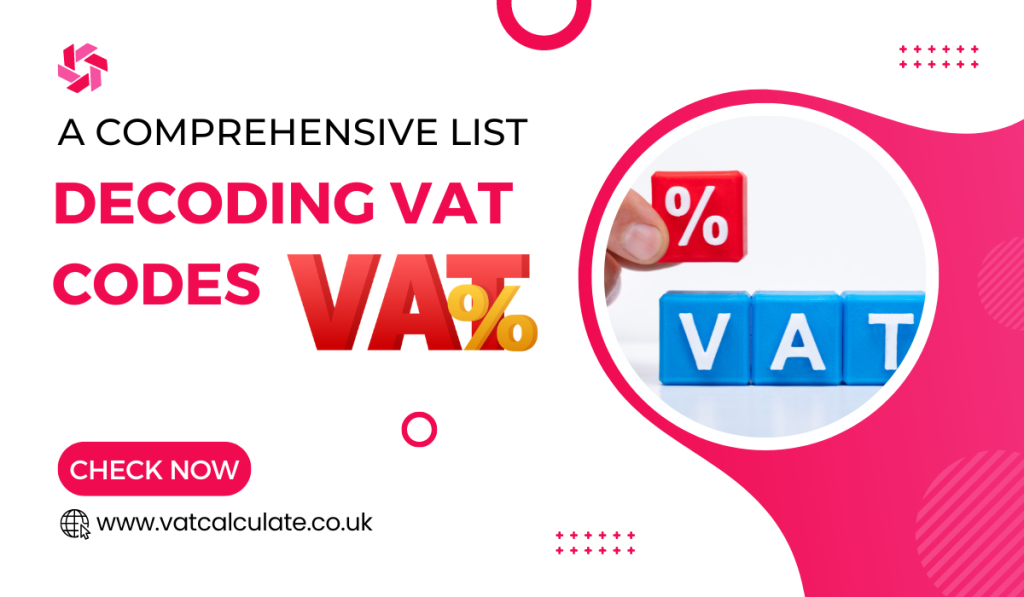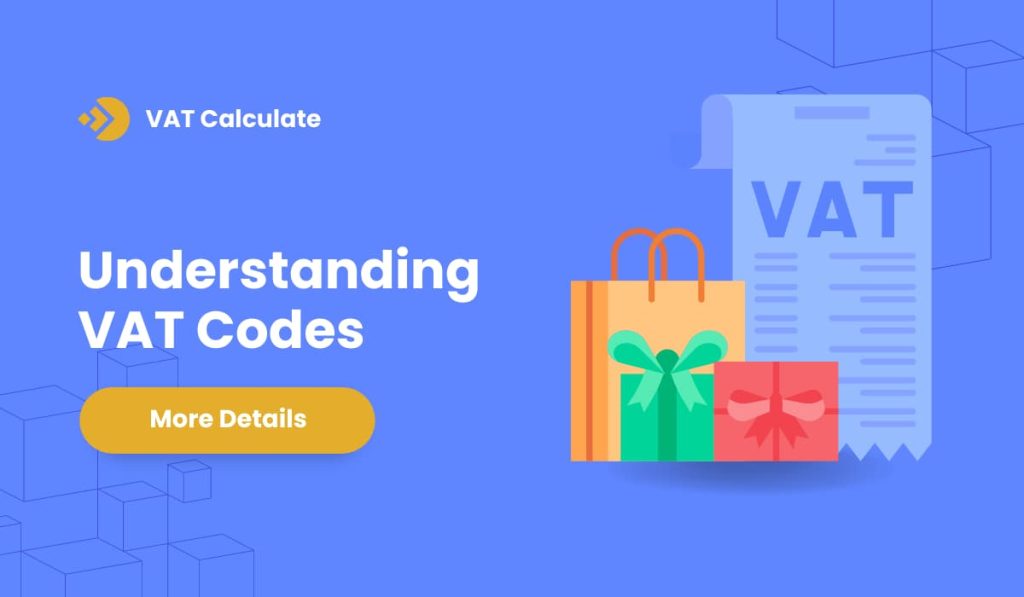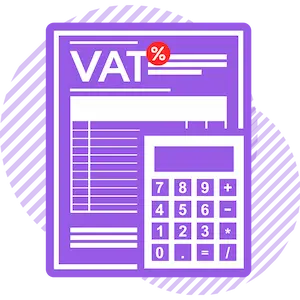VAT rates. You have heard the term. But what’s it all about? In simple words, VAT or Value Added Tax is a type of tax that you pay when you buy goods and services. In the UK, VAT is a big deal. It’s like the fuel that keeps the UK economy’s engine running. Money from VAT helps the government pay for things we all need.
Like schools, hospitals and roads. So, every time you buy a cup of tea or a new book, a little part of that money goes towards making our country better.

Now, here is the twist. Not everything you buy has the same VAT. Some things have a high VAT, some have a low VAT and some have no VAT at all. That’s where VAT codes come in.
They are like labels that tell you how much VAT is charged on different things. By using the right VAT code, businesses make sure they’re charging the right amount of VAT. And that’s really important. Because getting VAT wrong can lead to fines or even legal problems. Therefore, understanding the VAT codes and how to use them is vital for any business in the UK.
You can calculate the VAT using our VAT rate calculator tool and get the results instantly. You don’t need to calculate the VAT rates manually by using any kind of formula.
Breaking Down UK VAT Codes
Here is the table that shows different VAT rates in UK:
| VAT Code Name | Code | Brief Explanation |
|---|---|---|
| Standard Rate | 20.0 | Most goods and services have a VAT of 20%. |
| Reduced Rate | 5.0 | Some goods and services like home energy have a 5% VAT. |
| Zero Rate | 0.0 | Most food and children’s clothes have a 0% VAT. |
| Exempt | – | Exempt items have no VAT but can affect VAT claims. |
| Outside the Scope | – | Some items like postage stamps don’t have VAT. |
| No VAT | – | Gifts from a business costing £50 or less have no VAT. |
Diving into the Types of VAT Codes
- First up is the ‘Standard Rate‘. The code for this is ‘20.0’. Most goods and services fall under this one. It means a VAT of 20% is added to the price.
- Next is ‘Reduced Rate‘. This one’s ‘5.0’. It’s for some goods and services, like home energy or kids’ car seats. Here, VAT is less, at just 5%.
- Then there’s ‘Zero Rate‘. Code ‘0.0’. Things like most food and children’s clothes have no VAT. So, the rate is zero.
- ‘Exempt‘ is next. There’s no VAT on exempt items, but they are not the same as zero rates. The difference is in how they affect VAT claims.
- ‘Outside the scope‘ of VAT is another. No code for this one. Some things, like postage stamps or tolls, don’t have VAT. These are ‘outside the scope’.
- Last is ‘No VAT‘. Again, no code here. It’s for items where no VAT is charged. Like, gifts from a business costing £50 or less.
Note: It is important to use the correct VAT code for the corresponding VAT rate.
Understanding VAT Codes: A Step-By-Step Guide

Alright, let’s get into using VAT codes. Follow these steps, and you will be a pro in understanding the VAT rates within a minute.

First, identify the item you are dealing with – a book, a cup of tea, or a child’s car seat. Then only you can determine the appropriate VAT code.

Next, use the VAT code table to pick the right code. Remember, each item can have a different VAT rate. So make sure you’ve got the right one!

Now, add the VAT to the price. If it’s the standard rate, add 20%. If it’s the reduced rate, add 5%. And if it’s zero rate, add nothing.
Let’s understand it by taking an example
Here’s an example.
Let’s say you’re selling a book for £10. Books are zero-rated. So, you don’t add any VAT. The price stays at £10.
And another example. You’re selling a fancy lamp for £100. Lamps have the standard VAT rate. So you add 20% VAT. That’s £20. So the price with VAT is £120.
That’s it. It’s all about knowing what you are selling, picking the right VAT code, and adding the VAT. Follow these steps and you’ll get it right every time.
Watch Out! Common VAT Code Slip-Ups and How to Dodge Them
Right, let’s get into some common mistakes with VAT codes. And more importantly, how to avoid them.




Avoid these common mistakes and you are on your way to mastering the right use of VAT codes.
Stay Sharp: How to Keep Up with VAT Code Changes
VAT codes aren’t set in stone. They can change. Maybe the government decides to change the VAT on something. Or maybe a new type of good or service comes along that needs a new VAT code. Whatever the reason, when VAT codes change, you need to change too.
So, how do you stay updated? Here are a few tips.



So the key point is you should stay updated on VAT codes so that you can use the VAT rates correctly. So keep an eye out for changes and be ready to update your codes when needed. It’s all part of doing business in the UK.
Wrapping Up: The Vital Role of VAT Codes
We have covered some basic information and tips about VAT codes. Though they might seem like just a list of numbers and names. But they are much more than that.
They are a key tool in the UK’s economy. And for businesses, they’re a guide to getting VAT right. Using the correct VAT code, staying updated on changes, and avoiding common mistakes is as important as keeping your business running smoothly.
Join the Conversation: Share and Comment
Have something to say about the VAT Code? You can share your thoughts, experiences or questions in the comments. Comment and share any thoughts, experiences or questions in the comments. Additionally, if this post proved beneficial to you, feel free to pass it along – who knows who could benefit from reading this! Let’s spread knowledge and help each other achieve our goals together.
FAQ (Frequently Asked Questions)
1. What is a VAT code?
A VAT code is a label that shows how much VAT is charged on a good or service. Each different type of good or service can have a different VAT code.
2. Why are VAT codes important?
VAT codes are the key to charging the correct VAT. If we use the wrong VAT code, this may result in a change in the VAT calculation, which may result in an error and lead to further penalties.
3. How do I find the right VAT code?
You can find the right VAT code by checking the UK government’s website. They have a list of all the VAT codes and what they apply to.
4. Can VAT codes change?
Yes, VAT codes can change. The government might decide to change the VAT on a good or service, or a new type of good or service might need a new VAT code.
5. How do I stay updated on VAT codes?
You can stay updated by checking the UK government’s website often, signing up for VAT code alerts, or getting help from a professional like an accountant or bookkeeper.
6. What’s the difference between zero rate and exempt?
Zero rate means a good or service has no VAT, but you can still claim VAT. Exempt means a good or service has no VAT and you can’t make any claims.

